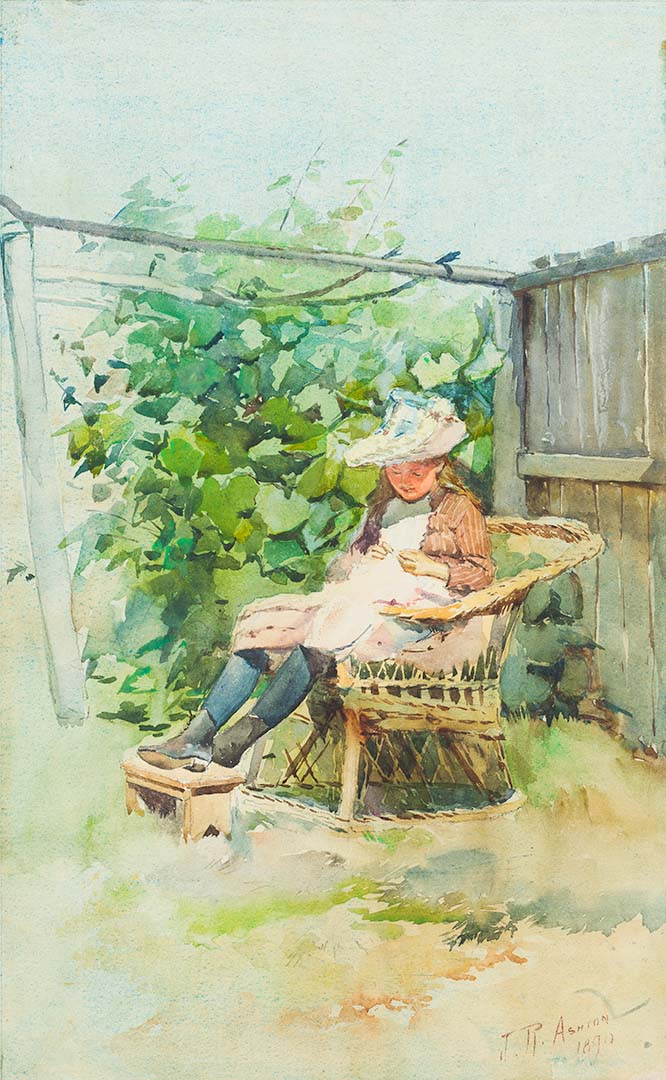We acknowledge the Traditional Owners of the land on which the Queensland Art Gallery | Gallery of Modern Art stands and recognise the creative contribution First Australians make to the art and culture of this country.

Julian Rossi Ashton / Australia 1851–1942 / (Young girl sewing in a garden) 1890 / Watercolour on paper / 43.4 x 26.5cm / Purchased 1989 from the estate of Lady Trout with a special allocation from the Queensland Government / Collection: Queensland Art Gallery | Gallery of Modern Art
Julian Rossi Ashton(Young girl sewing in a garden) 1890
Not Currently on Display
Julian Ashton’s choice of subject for this painting was interesting for several reasons. In the decades leading up to the date when (Young girl sewing in a garden) was produced, the most commonly favoured artists’ subjects were landscapes and history paintings (in which subjects from Australian social history, such as pioneering and gold mining, were idealised in order to supplement Australia’s apparent lack of ‘real history’). Although figures were often incorporated into these landscapes, they seldom formed the focus of a composition and were very rarely women or children, who were characteristically confined to interiors.
The identity of the model for (Young girl sewing in a garden) is not known. Ashton had a daughter, Bertha, however she would have been too young in 1890 to have been his model for this painting. In fact, the model was just as likely to have been a stranger, prevailed upon to pose for Ashton as she went about her work. Ashton recorded a similar incident in his biography: ‘I painted a watercolour of . . . [Clyde] street . . . and wishing to liven it up with a figure I asked a little girl who was skipping about if she would stand still for a few minutes . . .’1
Endnotes:
1. Ashton, Julian. ‘Now Came Still Evening On’. Angus & Robertson, Sydney, 1941, p.34.
Julian Rossi Ashton was born in Alderstone, England in 1851. He studied art in London at the West London School of Art, and in Paris at the Académie Julian, before emigrating to Australia in 1878 to work as an illustrator for newspapers in Melbourne and Sydney. Ashton painted landscapes, portraiture and figure groups in watercolours and oils.
He was among the first artists in Australia to adopt and teach plein air painting, soon becoming central to a group of artists experimenting with this technique including Frank P. Mahoney, A.H. Fullwood, A.J. Daplyn and Charles Conder, who painted around Sydney Harbour and in the region of the Hawkesbury River during the 1880s.
Ashton’s studies at the Académie Julian in Paris familiarised him with French impressionist painting techniques, particularly the practice of painting ‘en plein air’ (literally, ‘in open air’). While Louis Buvelot had already introduced plein air painting to Australia before Ashton’s arrival, it was Buvelot’s practice to merely execute detailed pencil sketches ‘en plein air’, later completing his canvases in the studio.